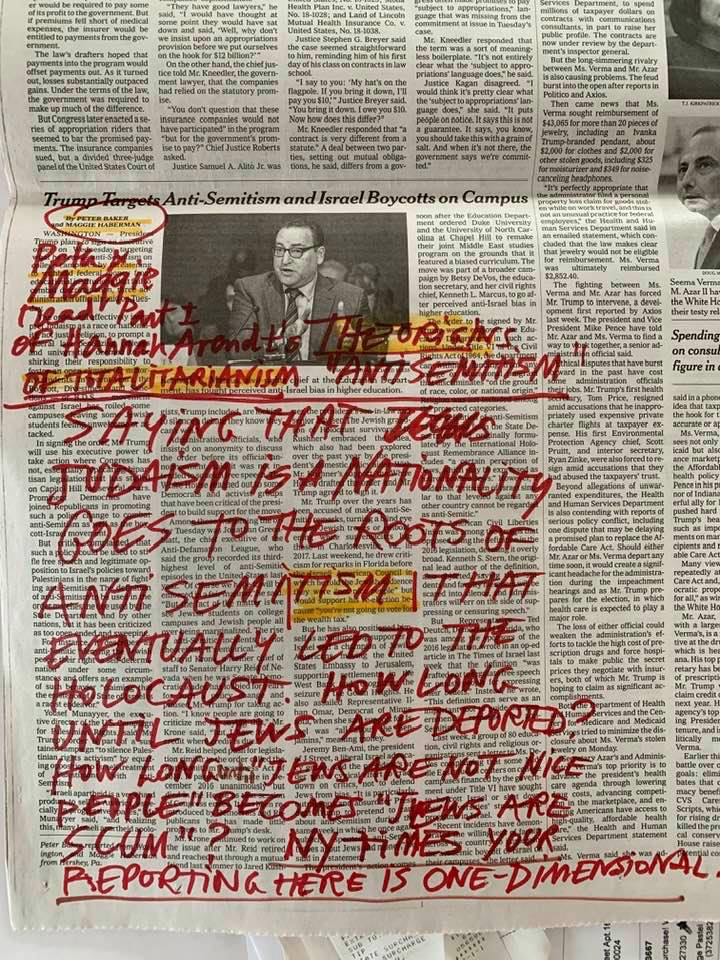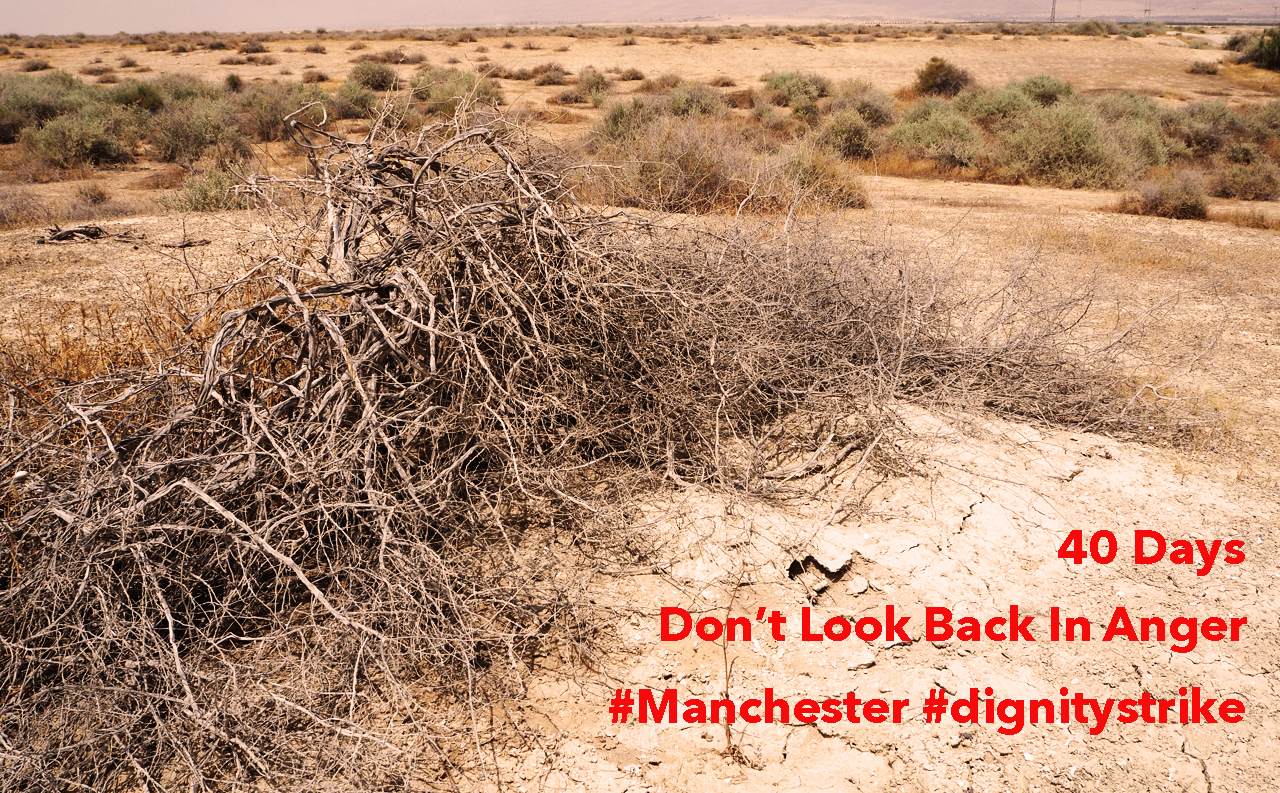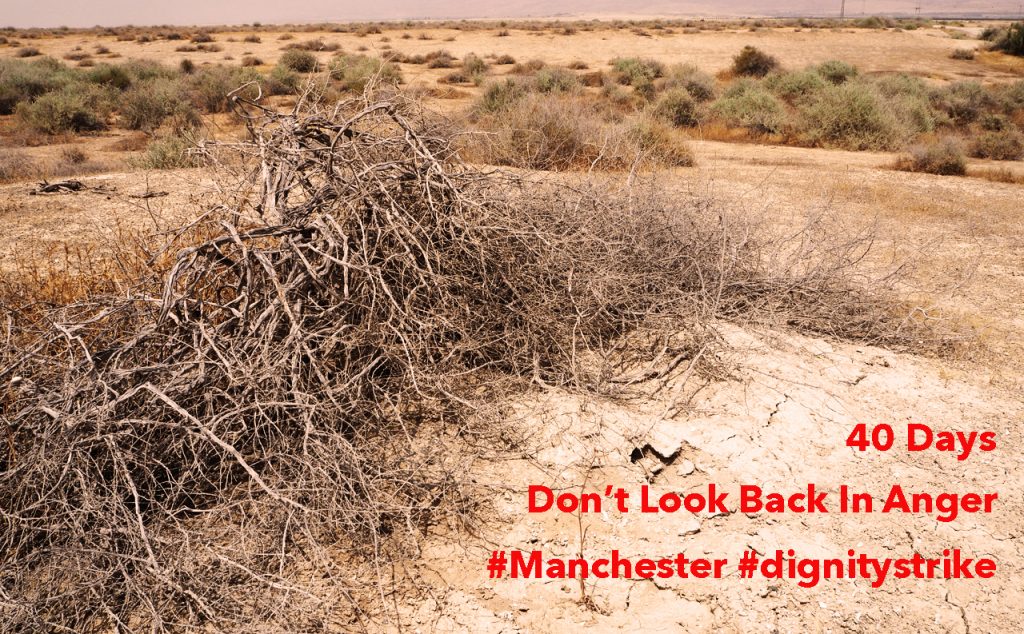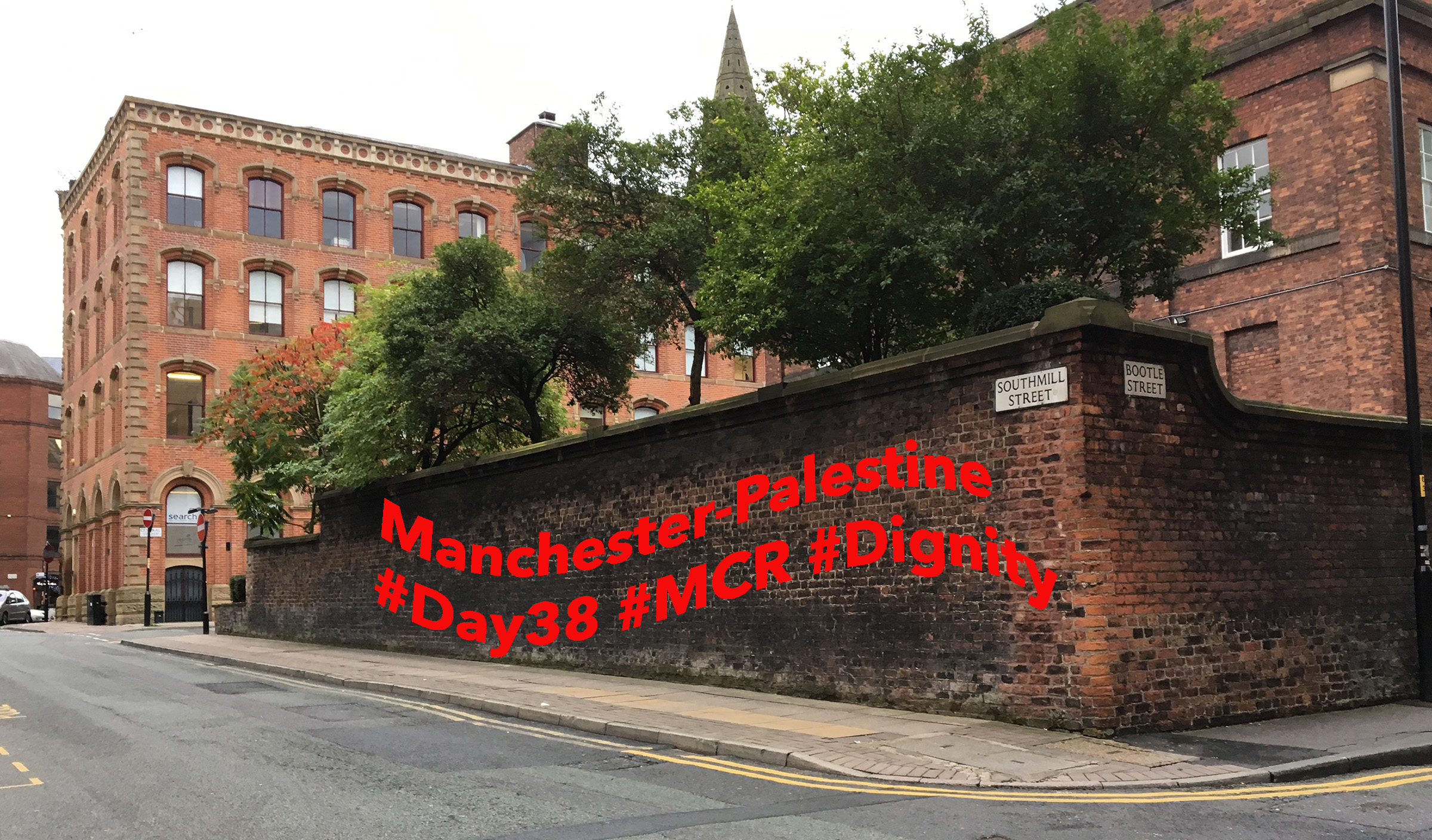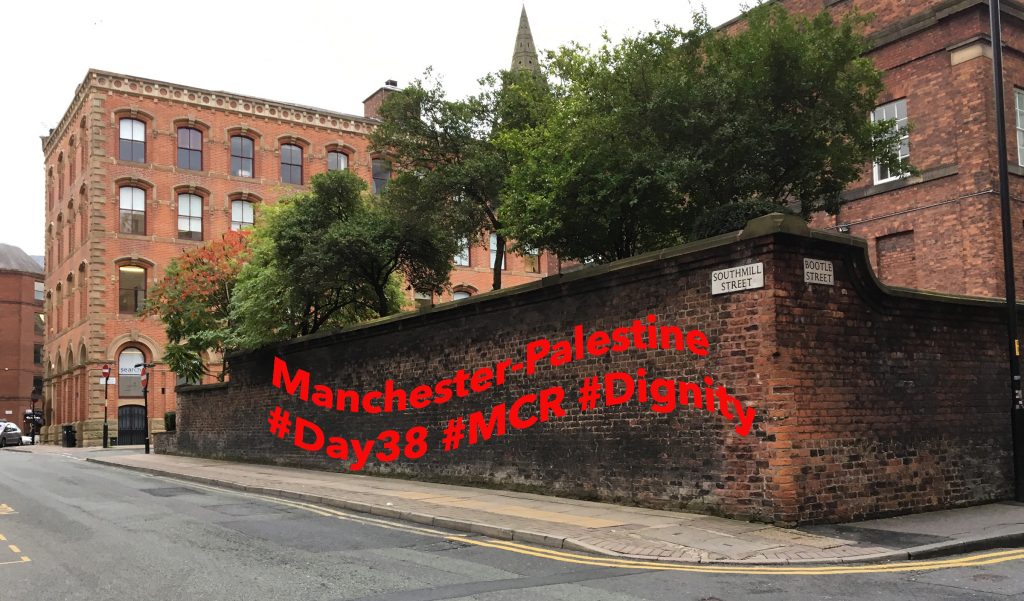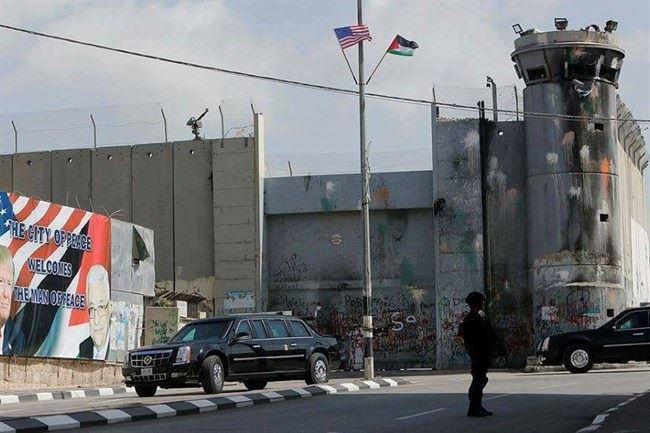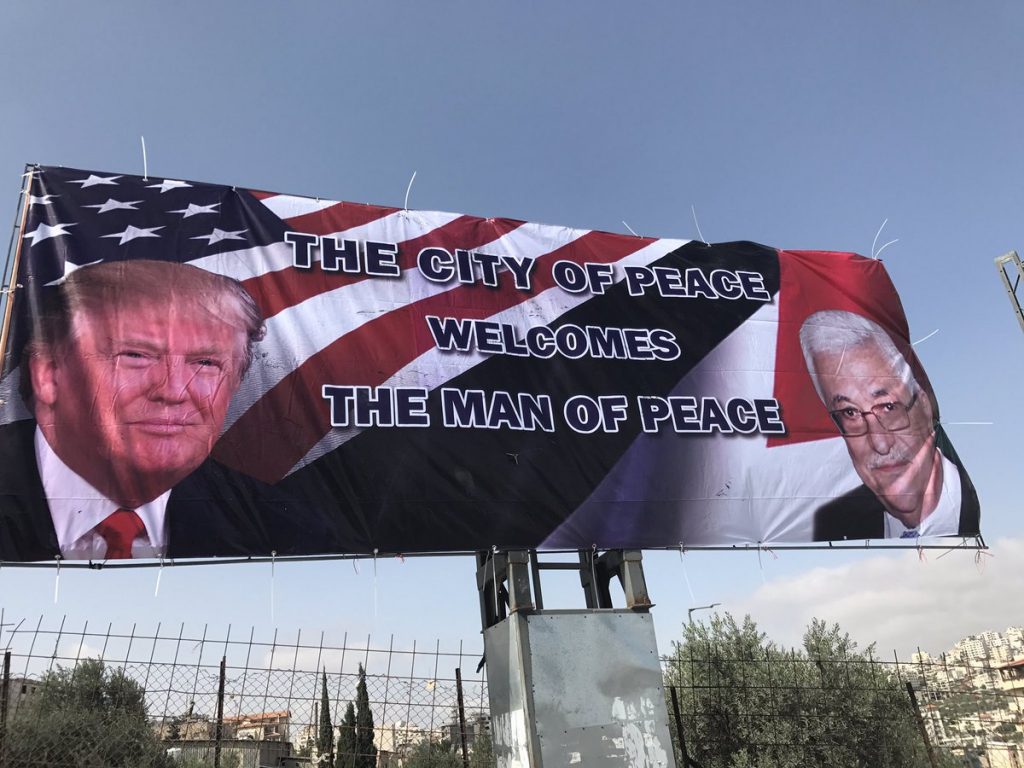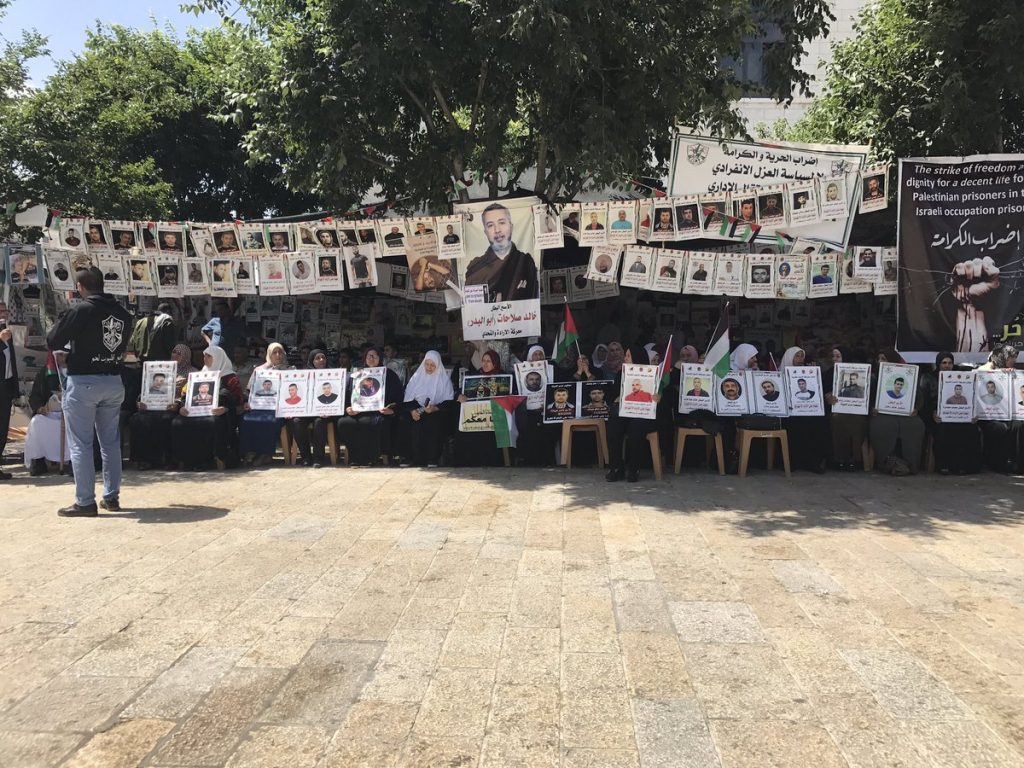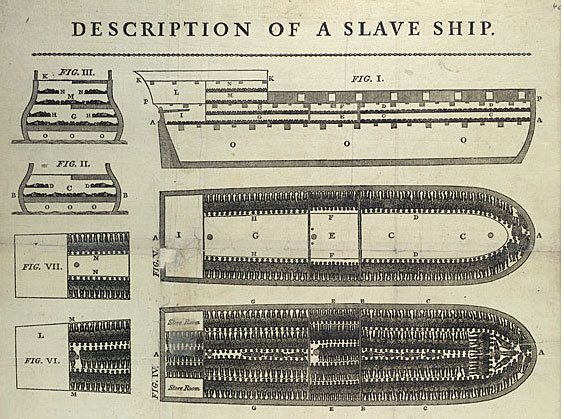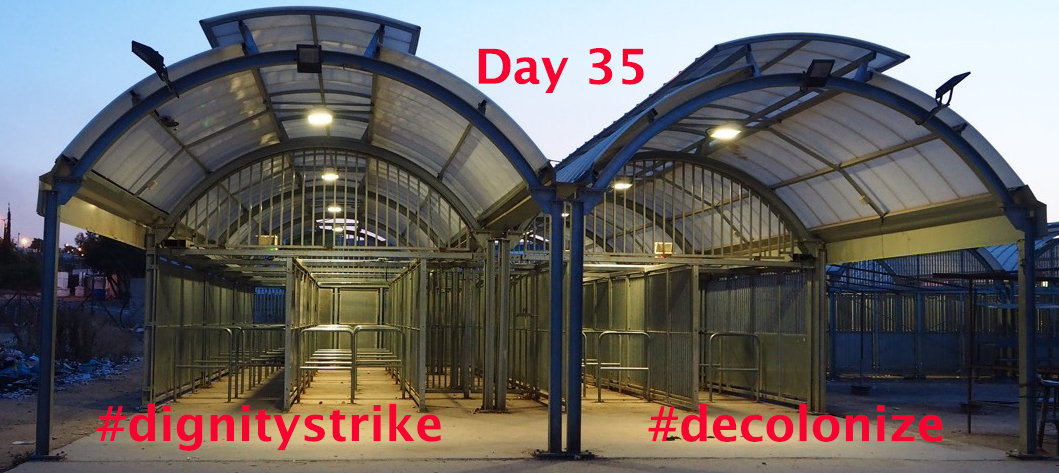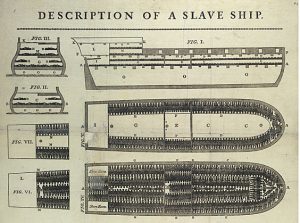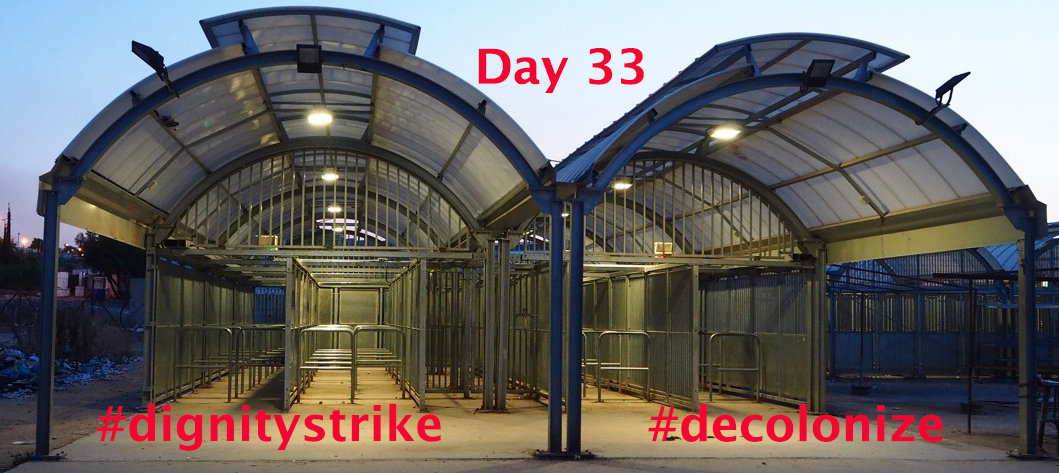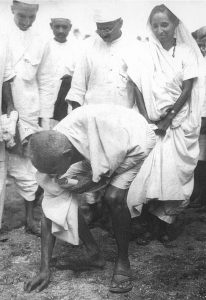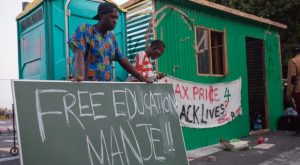My body has just become a battleground for the rise of the nationalist right. The Anglo-American governing strategy is to consolidate nationalists and split the left around the figure of the “Jew.” I’m of Jewish descent and I have family in Israel. According to the Trump administration that now means being Jewish is my national origin “on the basis of actual or perceived ancestry or ethnic characteristics.” Really? Which ancestry? The Bukharans who became Jews to get into Russia in the 1860s? Or the unknown Eastern Europeans or Russians who fetched up in London’s East End in the 1890s? Which ethnic characteristics? My nose? My tendency to be sarcastic?
It’s easy to make fun but this is serious business. The Brexit-Trump wave of 2016 has doubled down on white nationalism. This nationalism has updated the neoliberal tactic of attacking your opponent’s strength. It now accuses its opponents of being racist. Not the old racism that it so gleefully parades but a newly invented tradition: anti-Israel racism.
To cover the newness, they call it “antisemitism.” In this worldview, Brexit-Trump nationalists are not racists, they defend the Jewish nation against antisemitism. Meanwhile critics of Israel are racists, so Brexit-Trump nationalists are antiracist. They could care less about actual Jews. They want to split any possible antiracist coalition to govern by executive orders and majorities won with 42% of the vote.
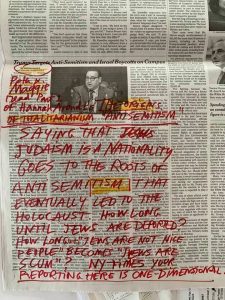
Can you be racist against a country? One you don’t even live in? Brexit-Trump nationalism gets around such objections by drawing up a list of rules, not legislation as such, but a “quasi-law.” So to win acceptance, call them by an imposing name. And then claim that everyone already agrees to these rules.
Enter the International Holocaust Remembrance Alliance and its definition of antisemitism as “a certain perception of Jews, which may be expressed as hatred towards Jews.” This is so vague that it can only be specified by examples. Example number one: “targeting the state of Israel.”
IRHA say you can, in theory, criticize Israel in terms “similar to that leveled against any other country.” Only in practice the new antisemitism police always find any criticism of Israel to be exceptional. Above all, don’t mention the occupation.
The IHRA definition was a key source of controversy in the Labour Party, where it was seen as preventing criticism of Israel. And now it’s been introduced as a benchmark by Trump’s executive order.
A marginal issue? Not if this quasi-law is being used to reconfigure “race” as “nation,” a position very congenial to the right. And not when the UK election will turn on 150,000 votes in marginal constituencies–it’s all margin. The 2016 US presidential election was decided by 100,000 votes across three states, a rounding error.
The small number of Jews that may change votes based on “antisemitism,” actual or invented, is almost irrelevant. Far more significant are those liberals who can be made comfortable with not voting or even voting conservative as an expression of their anti-antisemitism. To say nothing of those whites who can find this supposed antiracist nationalism to be a moral force.
First came the furore in the UK. Boris Johnson, author of casually racist and antisemitic fiction and journalism turned prime minister in the UK has been “shocked, shocked” to find purported antisemitism in the Labour Party. He has hardly had to make the point. A toxic alliance of print and broadcast media with anti-Corbyn Labour MPS has done it for him (see appendix below).
Yes, there are instances of antisemitism in Labour but not because Labour is an antisemitic party. Rather, Britain–especially England–is an antisemitic country.
Now comes Trump’s order to amend the Civil Rights Act with regard to antisemitism. Many Brexit-Trump mouthpieces call now criticism of Israel “anti-Jewish racism.” In this view, they are nationalists, not racists. The Left are racists. This has the further advantage of subdividing the racial category “semite” that includes Arabs and Jews to just focus on Jews. Brexit-Trump nationalism is all about Islamophobia, that’s “priced in,” as they say.
Many assume the goal of Trump’s order is to make support for the Boycott, Divestment and Sanctions campaign against Israel illegal. While it certainly does, that’s just a benchmark. The long-term goal is to consolidate an explicitly hierarchical white nationalism, hinging around the pivot of the “Jew,” and frame the “left” as anti-Jewish racists.
Here “Jew” means Israel, where Israel is both a totem for the religious right and the exemplary “racial settler colony” (Ronit Lentin). The goal is to pivot from the long-standing collective position that (to adapt Foucault) “Israel must be defended” to its updated form: “racial purity must be defended.” In both cases, what’s at stake is the racialized nation-state. Today Jared Kushner uses the liberal New York Times as his platform to declare “anti-Zionism is anti-Semitism” (his capitals) under the headline “Trump’s Order Protects Jews.” As if this invented tradition were accepted fact.
This shift has been happening for some time. The attack on the Democratic Representatives known as the Squad was the start. Ron Dermer Israel’s ambassador to the US already went so far as to cite Labour leader Jeremy Corbyn as a cause of the Pittsburgh massacre. In this way, the use of imputed antisemitism against those critiquing settler colonialism produces actual antisemitic violence. The push-back against Bernie Sanders by association with the Squad has already started in the Jewish press.
From here, expect that BDS and declarations of loyalty to all that Israel does will become wedge issues first in the Democratic primary and then in the general election. Learn from the UK–facts don’t matter in this debate, endless repetition creates moral panic: over 5400 media articles about alleged antisemitism in the Labour Party. It doesn’t have to win the argument. It just has to split votes enough to let the nationalists win.
Let’s look at how this is already playing out. The Middle East Studies Association Board of Directors issued a statement at the start of its 2019 annual meeting condemning
“the conflation of criticism of Israeli actions and policies, and of Zionism as a political ideology, with anti-Semitism.”
On the same day, yet more children were buried in Gaza after the latest Israeli bombing. The usual statement “Israel has a right to defend itself” came from Mayor Pete Buttigieg, as if to speak for the triangulating tendency of neoliberalism. But, as part of the new nationalism, Israel has stopped playing by triangulation rules. A few days after Buttigieg and Biden defended the Gaza bombing, Israeli newspaper Ha’aretz revealed the whole incident was a sham:
The target had not been re-examined for at least one year prior to the strike, the individual who was supposedly its target never existed and the intelligence was based on rumors.
No one in the “Israel must be defended” lobby, inside or outside Israel, cared. But they know enough to want to prevent others from talking about it.
So is it now “antisemitic,” under the terms of Trump’s order, for me to discuss what has been reported in Israel on my university campus? Can I ask how the right of nations to self-defense has been distorted to justify attacks on occupied territory in conditions of mass incarceration?
When NYU’s spokesperson claims it is “highly supportive [and] deeply concerned about its Jewish community,” does that mean me and others of Jewish descent who are appalled by what is being done in our name? What’s a Jew to do?
This is just beginning.
Appendix: Why the Labour Party Is Not Antisemitic
So many pay credence to these allegations that it’s worth re-enumerating why the idea that Labour is an antisemitic party is wrong and how it was formed:
- The number of members alleged to have been antisemitic and subject to a Labour Party investigation represented about 0.1% of the membership.
- Between June 2015 and March 2019, eight national newspapers carried a total of 5497 stories about Labour and antisemitism. It’s what Stuart Hall called a “moral panic.”
- The great majority of people reported for antisemitic remarks or behavior were not Labour Party members.
- For example, of the 200 cases cited by Labour MP Margaret Hodge in May 2019, only 20 related to Labour Party members. This discrepancy was not acknowledged by Hodge, who has continued to give interviews referring to ‘countless’ or ‘thousands’ of cases.
- Labour party internal discipline over these cases has been hindered by party officials politically opposed to Corbyn. (Full details of these points and more can be downloaded from Jewish Voice for Labour here
